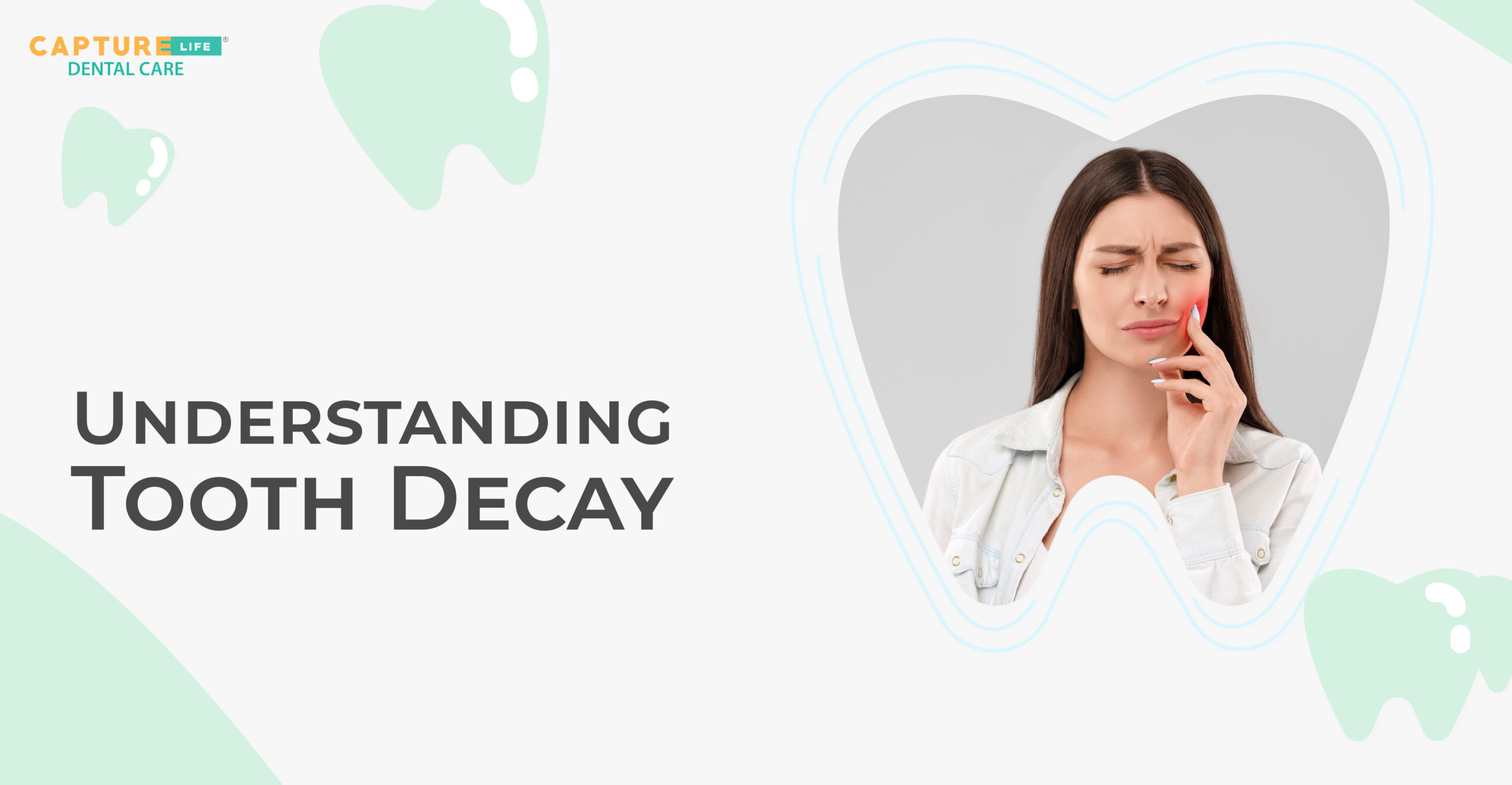
01 Nov Identifying and Preventing Tooth Decay: Your Comprehensive Guide
How to Identify and Prevent Tooth Decay Effectively
Introduction
Dental care is a crucial aspect of our overall well-being, and tooth decay is a common oral health issue that needs our attention. Tooth decay, also known as dental caries or cavities, is the gradual deterioration of your tooth’s structure. It begins with the erosion of the outermost layer, the enamel, due to acids produced by bacteria in your mouth. These harmful bacteria thrive in the plaque that forms on your teeth, a sticky film of microorganisms.
The process starts with the breakdown of enamel and progresses to the dentin, a softer tissue beneath it. When not addressed, it can lead to pulp infection, causing excruciating pain and requiring immediate attention at a dental clinic near you.
The Stages of Tooth Decay
Understanding the stages of tooth decay is crucial for early detection and intervention. These stages include:
- Initial Demineralization: This is the earliest stage, where minerals are lost from the enamel due to acid attacks.
- Enamel Decay: If the initial demineralization is left unchecked, it can lead to enamel decay, characterized by visible white spots.
- Dentin Decay: As the decay progresses, it reaches the dentin, leading to increased sensitivity and the formation of cavities.
- Pulp Infection: The most advanced and painful stage, it occurs when the decay reaches the tooth’s pulp, necessitating immediate attention at a dental hospital near you.
How to Identify Tooth Decay
Early identification of tooth decay is vital to preventing the progression of this common dental problem. Capture Life Dental Care can help you recognize the signs and symptoms, allowing you to take action before the issue becomes more severe. Here’s an in-depth exploration of how to identify tooth decay:
- Tooth Sensitivity to Hot or Cold:
- One of the earliest signs of tooth decay is increased sensitivity to hot or cold foods and beverages. You may experience a sharp, transient pain when consuming something hot, cold, sweet, or acidic.
- This sensitivity occurs because the enamel, the outer protective layer of the tooth, is beginning to erode due to the action of acid-producing bacteria. When the enamel is compromised, the underlying dentin becomes exposed, leading to sensitivity.
- Toothache or Pain:
- As tooth decay progresses, the pain can become more persistent and intense. It may be felt as a dull ache, throbbing pain, or sharp discomfort, depending on the stage of decay and the location of the affected tooth.
- This pain often results from the decay reaching the dentin or even the pulp of the tooth. When this occurs, it’s a clear indication that professional dental care is needed to address the issue.
- Visible Holes or Pits in Teeth:
- Visual inspection of your teeth can reveal the presence of cavities, which are holes or pits on the tooth’s surface. These cavities can range in size and severity, and they are often associated with more advanced stages of tooth decay.
- The cavities are a result of the demineralization and erosion of tooth structure caused by the acid-producing bacteria. They may appear as dark spots or white, chalky areas on the tooth’s surface.
- Change in Tooth Color or Texture:
- You might notice changes in the color or texture of your teeth. Decayed areas can appear darker or discolored compared to the surrounding healthy enamel.
- The texture of the affected area might feel rough or irregular, as it has lost its smooth and glossy surface due to mineral loss.
- Bad Breath (Halitosis):
- Persistent bad breath can be an indirect sign of tooth decay. The bacteria responsible for decay release acidic byproducts, contributing to unpleasant breath odor.
- Unpleasant Taste or Sensation:
- In some cases, tooth decay can cause a foul taste in the mouth, particularly when eating or drinking.
It’s important to note that not all cases of tooth decay present with obvious symptoms. Some individuals may have asymptomatic decay, which can only be detected through regular dental check-ups and X-rays. Therefore, maintaining a proactive approach to dental care and visiting a dental clinic near you for routine examinations is crucial.
Preventing Tooth Decay
Preventing tooth decay is the best approach to maintaining good dental health. Here are some practical tips:
- Brush and Floss Regularly: A daily oral care routine is your first line of defense.
- Choose a Fluoride Toothpaste: Fluoride strengthens your enamel, making it more resistant to decay.
- Limit Sugary and Acidic Foods and Beverages: Reducing your consumption of these substances can greatly help.
- Balanced Diet: A diet rich in fruits, vegetables, and dairy products supports healthy teeth.
- Dental Sealants and Fluoride Treatments: These can provide an extra layer of protection, available at dental care clinics.
- Good Oral Hygiene Habits: Maintain good oral hygiene by following dental care advice.
Preventing tooth decay doesn’t have to break the bank. Seek low-cost dental clinics or dental centers near you for affordable options that align with your budget.
Conclusion
Remember, early detection and intervention can prevent tooth decay from progressing to more severe stages, potentially saving you from more extensive and costly dental treatments. So, if you experience any of these signs or symptoms, don’t hesitate to seek professional dental care. Capture life Dental Care is the place for you to seek best dental care for your good oral hygiene. Your dental health is a valuable asset, and timely action can help preserve your smile and overall well-being.
Good dental health is an investment in your overall well-being. By practicing excellent oral hygiene and visiting the best dental clinic near you, you can keep your smile bright and your teeth healthy. Don’t wait until it’s too late – take action today and visit Capture Life Dental Care to protect your oral health.

